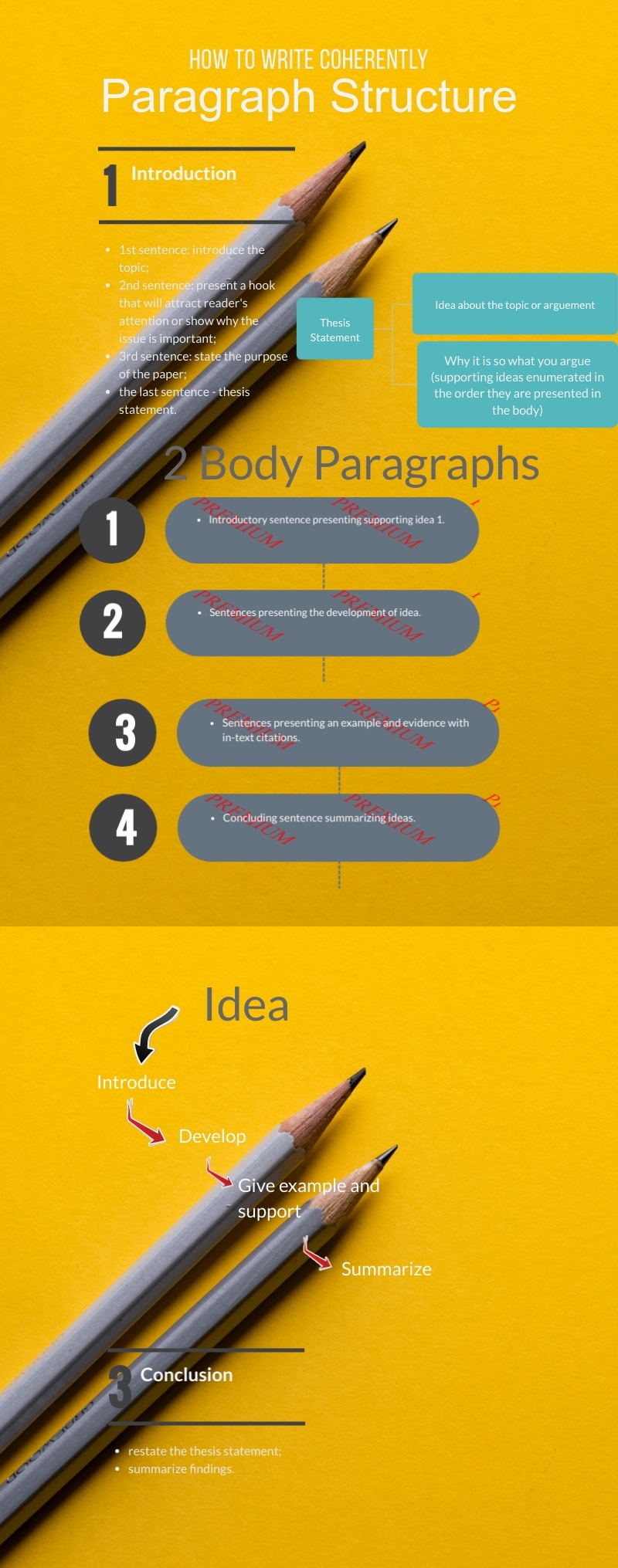
Academic paragraph structure requires a logical flow of thought to present ideas in academic writing.
Particularly, the writer should achieve a smooth flow of thought in writing.
Thus, the infographic image above presents a roadmap how to do this.
Paragraphs in the Structure of an Academic Paper
First of all, each paragraph should have the following aspects:
- present one idea explaining the main topic,
- develop it,
- support with evidence,
- summarize.
Furthermore, the first sentence of each paragraph is introductory.
The central part contains supporting information for this topic sentence. In this case, the structure can be simple, as stated above:
- introduce;
- explain;
- give an example;
- summarize.
However, academic paragraph structure can be also extended in a block:
- introduce;
- present the first supporting idea;
- develop it;
- give evidence;
- present the second supporting idea;
- develop it;
- give evidence;
- summarize.
In general, a paragraph is around 100 words and not less than three sentences.
Introduction is a paragraph that presents the topic, purpose of the paper, and an argument or thesis statement. The latter is very important because each next paragraph should support it. It should present a sound argument and supporting ideas in the order they appear in the text.
For example, let’s consider the topic of the SWOT analysis of Coca-Cola. The thesis statement presents supporting ideas that will require separate paragraphs (namely, strengths, weaknesses, opportunities, threats):
Coca-Cola has a strong position in the market and competitive advantage because of its strengths and opportunities, but should overcome some issues as shown by weaknesses and threats.
The body paragraph begins with the topic sentence. For example,
Introduce: Coca-Cola has several strengths based on the SWOT analysis.
Develop: Particularly, it has strong brand identity.
Support: For example, as researcher .. (2020) states..
Summarize: Therefore, it shows that its strengths enable Coca-Cola to enjoy a competitive advantage.
Conclusion restates the thesis statement above and presents findings concerning the topic of SWOT. It can also provide ideas for further research and recommendations what should be done to improve company’s operations.
Remember the Following
In a paragraph, introduce an idea, develop it, support with examples, and summarize to write coherently.

Leave Your Feedback